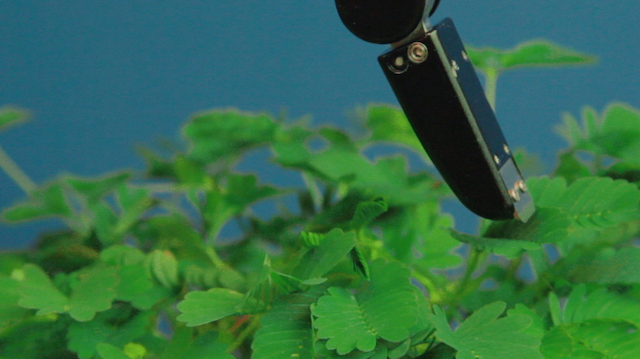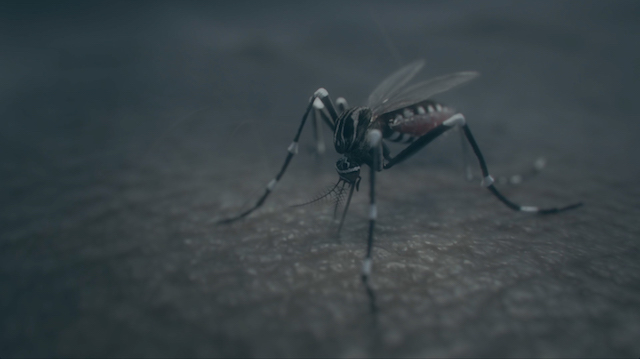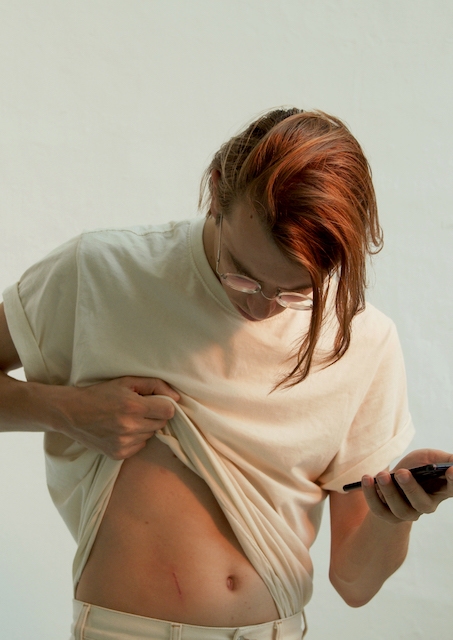The apparently indigenous woman is talking to a field of genetically modified plants. Among the subjects discussed are reproductive rights, infertility, labour and monocultural farming. A man watches them. Limited by his humanity, he hears nothing of what the plants have to say, only the wind rushing through the corn leaves. The woman, it turns out, is an android, the man an oil worker, evacuated from a rig following an unpublicised spill that is contaminating the Brazilian coast. This is Pedro Neves Marques’s 2017 short film Semente Exterminadora (Exterminator Seed), a piece of speculative fiction that is typical of the New York-based, Portuguese artist’s work of the past decade: an oeuvre that has spanned filmmaking, installation, editing and writing, and incorporated beguiling contradictions, leaps of faith and a seductive exploration of identity and its intersection with the natural world and non-Western cosmologies.
The exchange between the android and the transgenic crop – the two nonhuman ‘voices’ – indicates the possibility of an existence that is located beyond human experience. The android and the corn challenge the assumption of exclusive rationality and emotion that has long defined us as human beings, and their interaction suggests a queering of intimacy, closeness and care against the backdrop of impending climate catastrophe. This notion of a relational space outside the sphere of human understanding and control is apparent again in the artist’s two-and-a-half-minute looped video The Pudic Relation Between Machine and Plant (2016). A disembodied robotic arm repeatedly touches a Mimosa pudica plant, which naturally recoils on contact with the artificial digits. Simultaneously an act of desire and of violence, the video gestures towards the friction between pleasure and pain that is a part of all sexuality.

Both the tension and the ambiguity of Semente Exterminadora are extended in A Mordida (The Bite, 2018), a two-channel video installation that was shown at the Pérez Art Museum Miami (the artist frequently remodels and reconfigures work: this formed the basis for a short film that later premiered at the Toronto International Film Festival in 2019). Amidst an epidemic of Zika virus – the work was made two years after the outbreak that stalked Brazil in 2016 – three individuals are engaged in a non-binary and polyamorous relationship and living in a house in the country’s Atlantic forest. One of them is a scientist at an advanced research facility in the city of São Paulo where genetically engineered mosquitoes are being mass produced. The immediate desire of these characters is to survive the epidemic, carried by Aedes aegypti, the mosquito species also responsible for the transmission of dengue and yellow fever. Emotions escalate among the lovers and the power balance among the trio shifts when the initially most submissive of the three – a trans woman – becomes more dominating, both emotionally and sexually, just as the research-industrial complex prepares to release an army of mutant insects across the country to fight their fever-carrying brethren. Neves Marques’s narrative is based on fact: in 2016 Oxitec, a British biotech company, developed male mosquitos with a ‘self-limiting gene’ that would prevent female offspring from reaching reproductive maturity. In the artist’s fictionalised version of the experiment we find the abiding interrelating themes that drive Neves Marques’s work: sex, intimacy, reproduction, violence and colonialism.
The mosquito, for example, is both character and metaphor. It shares the house and the intimacy with the three (human) subjects while also leading the biotech response to the virus that threatens them. Throughout the narrative it is acknowledged that the insect infects by drawing blood, an exchange analogous to extractivism: just as natural resources are extricated from the planet, through activities such as deep-sea oil drilling (damaging numerous ecosystems in the process) so the mosquito’s need for blood is disastrous to its host. The reading of the mosquito bite as a metaphor for the toxic and infectious nature of extractive activities is made explicit in the 2017 digital animation Aedes aegypti, shown for the first time in the artist’s aptly titled solo show Learning to live with the enemy at Museu Coleção Berardo in Lisbon that year. In one sequence, a mosquito sits on human skin drawing blood, while in another two mosquitos are seen copulating. The violence of the mosquito bite is juxtaposed with the violence of the sexual act, in all of its penetrating glory.
The genetically-engineered mosquitos released into the wild are weaponised biology, or as Neves Marques states in his Viral Poems (2019) – a series of framed, wall-mounted compositions – ‘the militarization/of biology/is/the language/of suppression’. Sexuality is understood by the artist as an ecosystem, a macrosystem that encompasses myriad interconnected and interdependent relations. It’s a system that includes both the social and cultural control of reproduction as well as the normalisation of bodies and intimate relations – which seem to operate both on humans and nonhumans alike. Neves Marques’s queering of sexuality hints at a possible critical response to the growing reinforcement and self-replication of normative structures of power. Going back to the artist’s recent foray into poetry: ‘sex as care/in times of crisis/among friends/among enemies/polyamory’.

The installation Becoming Male in the Middle Ages (2019), based on a short story written by the artist, was made in collaboration with music producer HAUT. It was presented at Castello di Rivoli, in Turin, a result of the Illy Present Future Prize, which Neves Marques won in 2018, and is currently being expanded for the Liverpool Biennial in July. Weaving a narrative that ties endocrinological research with the online sci-fi genre of Mpreg (which centres on male pregnancy fantasy), the 35-minute video follows a group of four friends, two couples in their midthirties, as they deal with the intricacies of reproduction. A male homosexual couple are attempting to have a biological child and a heterosexual couple deal with infertility issues. When one of the gay men decides to implant an ovary in his belly in the hope of having a baby with his partner, it prompts the woman in the heterosexual couple to ponder the consequences and reproductive rights of a male being able to carry his own biological child in relation to her own feminist ideals. Featuring bodily implants, gay parenthood and normative expectations of human reproduction, Becoming Male in the Middle Ages channels the discussion through Mpreg and its coded mode of storytelling, as it adheres to specific tropes within gay culture, such as the roles assigned to tops and bottoms, or masc and fem. Typically in Mpreg stories the feminine partner assumes the reproductive role, thus reproducing the association, Neves Marques notes, between motherhood and femininity. Mining this arcane subculture, Becoming Male in the Middle Ages sheds light on this homonormative setup, which replicates a toxic and straight understanding of masculinity even within the gay community.
Neves Marques has established a brand of speculative fiction tooled to deal with some of the most prescient issues of our time, from ecology to body politics. That he edited the first comprehensive English language anthology on Brazilian Antropofagia is perhaps telling of the historic influences that prey on his work. Titled The Forest and The School/Where To Sit at the Dinner Table (2015), this anthology includes texts by Jean de Léry and Michel de Montaigne as well as, of course, Oswald de Andrade and Hélio Oiticica. This interest in colliding or duelling cosmologies is investigated further in a recent essay addressing indigenous futurism, ‘Parallel Futures: One or Many Dystopias?’, where he poses the strengthening of competing or alternative narratives as a means to resist the single-narrative, colonial-driven construction of what the future may be. The way such issues are inextricably entangled in capital’s construction of the nature-versus-culture binary is fundamentally violent, the artist’s poignant science fiction argues, and is felt directly on our bodies. Neves Marques understands the tropes of the genre in a manner that enables him to move from an anthropology to a cosmology of the dystopian futures that loom over our heads. In the process, he gives us a glimpse of alternative, critical ways of being in the world.
From the March 2020 issue of ArtReview
